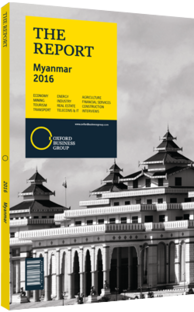Philippe Luxcey, Managing Director, Apollo Towers Myanmar: Interview

Interview: Philippe Luxcey
What made Myanmar an attractive destination, and what challenges have you encountered?
PHILIPPE LUXCEY: It was quite simple. We chose a greenfield market for our business. There was only one monopolistic operator, Myanmar Post and Telecoms (MPT), with a very limited number of sites. The government decided to award two licences in a very short period. It was a perfect opportunity to set up a tower company and start our business from scratch. Currently, we have two contracts, but the total number of towers is 1800, and as of September 2015 we have delivered more than 1200.
In terms of the cost structure, if you look at rural areas, of course transportation of materials is a challenge due to the limited infrastructure. So transport is an issue that leads to higher costs. When you go to cities with decent road access, costs are approximately 20% higher than in developed markets. When you go to rural areas, costs rise as much as 40%. When you go to very remote areas like in Shan, or Kachin, you need to transport materials on containers and trucks from Yangon. It takes close to one week to reach Kachin, so delays also impact cost. The costs often concern of the operator rather than the tower company. For rural areas, if there is no coverage today, due to the very high level of demand, the situation is a good deal for the operator. Sometimes, you can be surprised because people in very remote areas need perhaps even more phone coverage and telecoms services than in the large cities.
Is the lack of a stable energy supply impacting the operation of telecoms towers?
LUXCEY: Grid availability and quality is critical here. By way of comparison, in Africa, basically you get the grid or you don’t, and if you get the grid, it’s generally good; you can expect to get 220 V or 230 V. In Myanmar, however, even if you get the grid on a site, sometimes you get as little as 80 V instead of 220 V. That is the worst case scenario though. The average is around 120 V. The grid is not well distributed but it is present in a good portion of the country. The quality, however, does not perform to an expected level. We had to redesign our existing power solution with our suppliers to cope with Myanmar’s challenges. Our solution is to retune the parameters in our power cabinets. So instead of running 24 hours on a diesel generator, we have batteries. So we charge batteries, stop the generators and let the batteries discharge. Then we turn on the generators to recharge the batteries, in cycles, up and down. So we have a solution where we have two diesel generators on-site where we assume there is no grid at all. Then we remove a generator when the grid arrives and keep one generator on-site as back-up when there are cuts.
Solar power is costly and it’s not so efficient in the rainy season. So we are still working on studies and simulations to find the optimal mix. Today, speed is key for operators because they want to cover most of the country and do it quickly. Building a solar solution takes more time than putting in a diesel generator. There are also land issues, because to produce the same amount of energy with solar panels as with diesel generators, we need the land equivalent of two tennis courts, and it is very difficult these days to rent due to various factors such as escalated prices.
How would you assess network expansion since the arrival of the international operators?
LUXCEY: For the sector, Telenor and Ooredoo are quite successful, and MPT has also dramatically improved its position; their services and their quality of service was bolstered by their Japanese partner. Data services are improving quickly and congestion issues are being managed well. So competition is good and is improving the quality of service for customers. The market penetration rate is amazing. It was less than 10% a year ago and it is now above 50%.
You have reached the limit of premium articles you can view for free.
Choose from the options below to purchase print or digital editions of our Reports. You can also purchase a website subscription giving you unlimited access to all of our Reports online for 12 months.
If you have already purchased this Report or have a website subscription, please login to continue.

